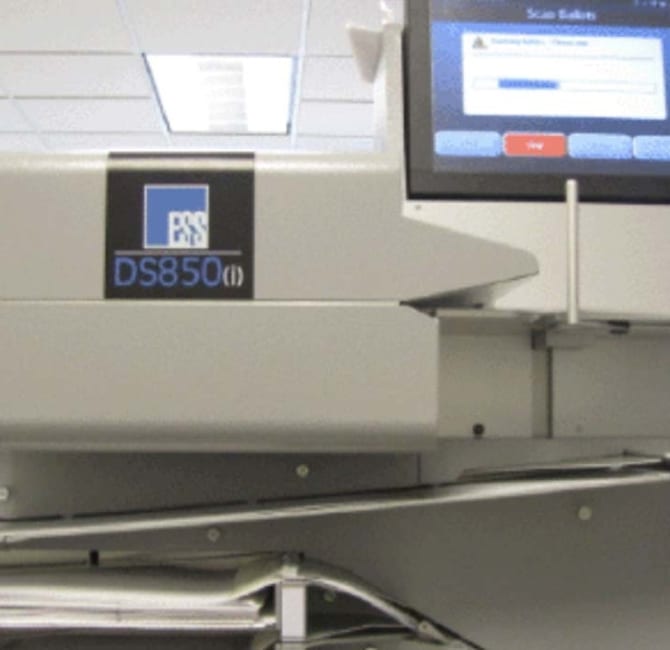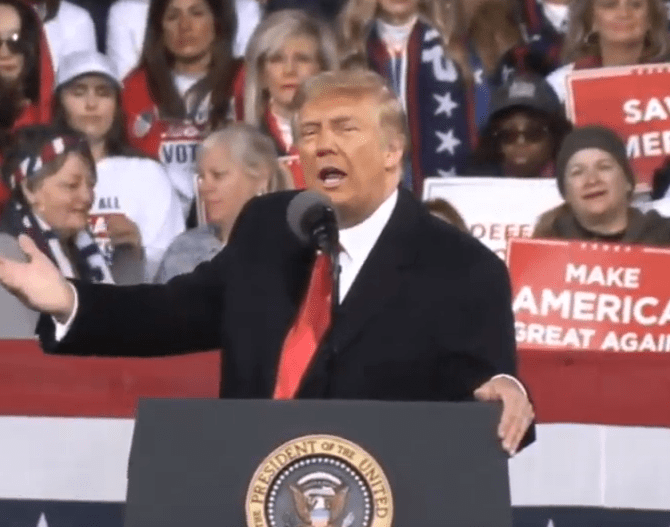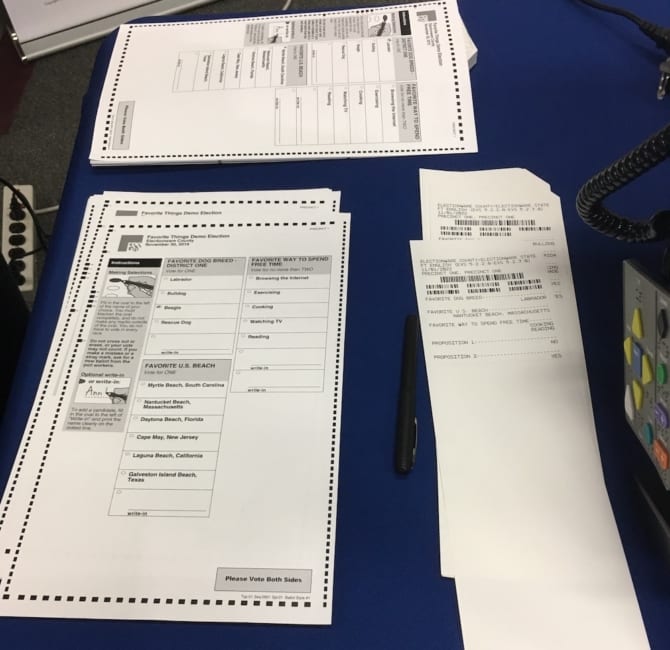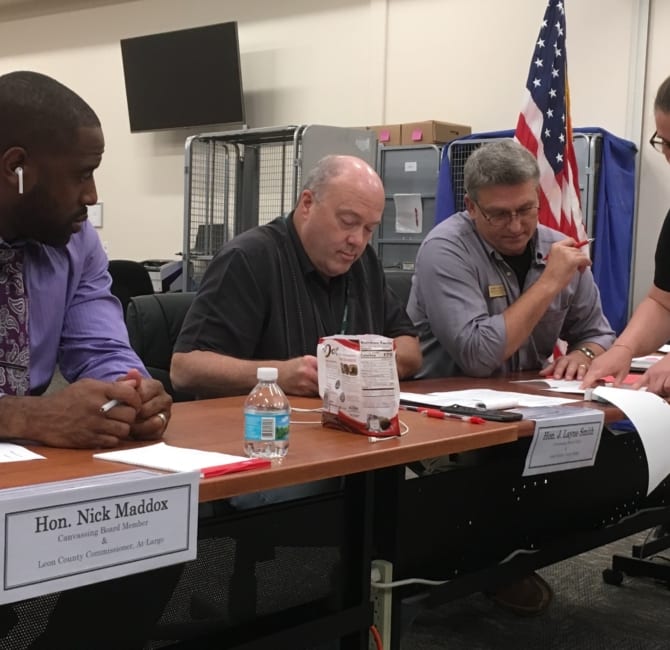Does Maryland Have the Answer for Verifying America’s Vote Count?
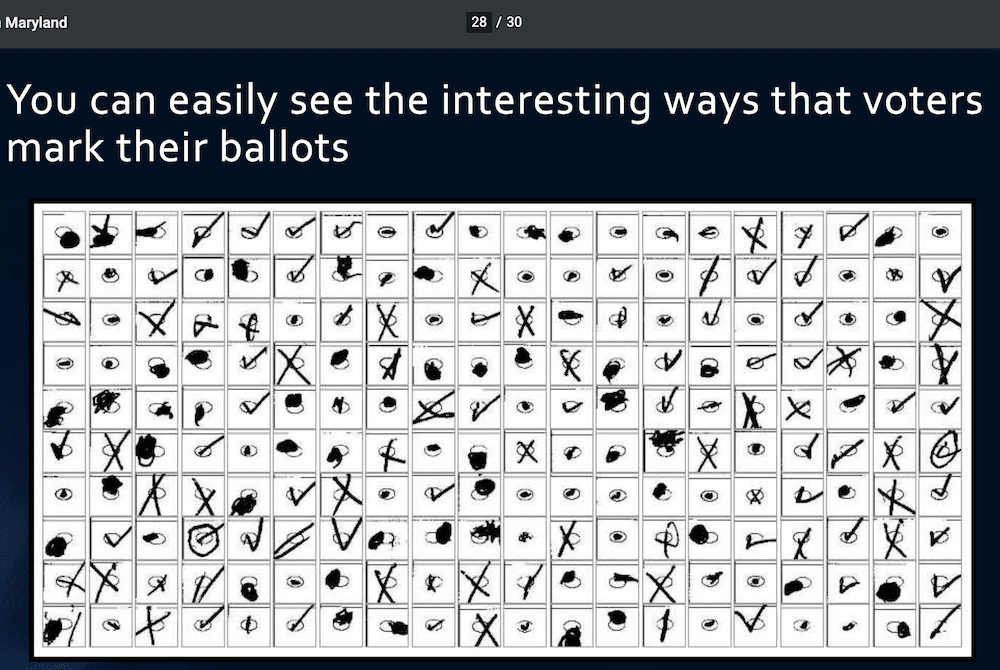
(https://www.ncsl.org/Portals/1/Documents/Elections/Elections_June2017_Ballot_Image_Audits.pdf)
As many states and counties buy new voting systems for the first time in a decade or more, new technologies are offering the prospect of verifying vote counts and election results with unprecedented precision and detail. But critics say they won’t bring more trustworthy elections.
The latest controversies are mostly centered around a system that replaces a voter’s ink-marked paper ballot with a printed ballot summary card listing their choices in bar codes and printed text, the latest version of a so-called ballot-marking device (BMD). But this fray, which is riddled with confusing claims, does highlight that the technology surrounding how votes can be counted and verified has evolved.
Part of that evolution raises valid and timely questions, such as: What’s the best form of paper ballot? What’s a legal election record (as most voting laws predate digital files, which range from spreadsheets of votes cast to digital images of every ballot)? And how precisely should initial vote counts be checked before winners are declared?
In many respects, the starting line for these questions goes back a generation. It began with the response to voting system failures during Florida’s 2000 presidential election. Then, punch card ballots failed to be read — due to still-attached perforations. Congress responded with 2002’s Help America Vote Act, a law spending billions on what was then widely seen as the best response to problematic paper punch cards: entirely paperless voting systems.
Seeing a windfall, the largest manufacturers quickly created computer touch screen voting systems called DREs, for direct recording electronic machines. In short order, DREs soon became known for technical shortcomings, erratic performance, hacking vulnerability, and an inability to verify votes or conduct recounts. Ballots were replaced by what was recorded — or, in some cases, not recorded — on memory cards. A backlash ensued — including, in some quarters, a visceral distrust that lingers today whenever computers are used to replace paper, pens and hands-on procedures.
Today, 75 percent of the country has revived using paper-ballot–based voting systems. In most jurisdictions, electronic scanners tally the votes. Scanners do that by first creating a digital image of the paper ballot, where software then identifies the ballot layout (which varies with local contests) and analyzes the ink marks to count the votes. Newer systems save these digital ballot images — a feature that has enabled some states and counties to double-check the initially reported results before declaring winners.
While there are different makes and models of voting systems, the reemergence of ballot-marking devices to replace ink-marked paper is now roiling anti-computerized-voting activists. The foremost opponents are academics and grassroots organizers who spent years opposing DREs and see this design as reverting to that system.
With today’s BMDs, voters use a computer touch screen to mark their choices. This approach seeks to avoid ambiguity surrounding sloppy ink marks on paper. Voters then approve their choices, after which the machine prints out a ballot summary card with bar codes and text listing their votes. Other parts of this system create a digital image of the summary cards, and analyze its bar codes to count votes and tabulate results.
(This general design has been slightly modified and used for many years as a voting station to assist people with disabilities. But as manufacturers are promoting its wider use, its critics essentially see it as a return to DREs with a paper trail.)
Lots of heat, far less light
The critics believe there are too many hidden or hackable parts that can be targeted by malevolent actors to steal votes and rig results — in short, resurrecting old criticisms of DREs. But stepping back, examining these latest charges can illustrate how much has changed in voting technology, and that counting votes and verifying results could be more precise than ever — if best practices were more widely used.
To start, there are big differences between DREs and the newest BMDs. As Ben Adida, a cybersecurity expert and voting system engineer who created a non-profit to build an inexpensive and open-source voting system, recently tweeted, “equating Ballot-Marking Devices with paperless voting machines is an exaggeration.” Yes, these devices could be better, he added, noting that their bar codes and printed voter choices could be larger and more readable. But the newest BMD systems do produce a secondary record of the vote cast that can be verified and compared to its internal electronic tabulation, he said.
“Paper is there. Mismatched barcodes can be discovered with auditing. And improving paper verification is doable,” Adida tweeted. “It’s easy to be a security maximalist while ignoring other requirements. We need to do better than that, be more subtle, take other requirements into account.”
The maximalists to whom Adida was referring are a mix of academic computer scientists and grassroots election integrity experts, such as those cited recently in Politico who have been equating BMD systems (that may soon be acquired in Georgia, Pennsylvania, New York and elsewhere) with DREs. In short, the critics are firmly rejecting the prospect of any technological progress or better verification of the first unofficial vote counts. As Adida observed, there’s no middle ground.
Other recent examples reveal how intractable this landscape has become. For example, one Princeton computer scientist, who recently waved an olive branch conceding that digital technology has legitimate uses in voting systems, more recently delighted in repeatedly announcing that BMDs could theoretically be hacked to alter the totals.
“Practically any computer is hackable,” Princeton’s Andrew Appel wrote on the Freedom to Tinker blog. Thus, having that digital layer between a voter making their choices on a screen and the printing of a ballot summary card was an open invitation to hacking, he noted, saying that was “such a bad idea that it should be considered a design flaw.”
The firm whose BMD he targeted, Dominion, replied that its system does not fabricate votes. Appel essentially countered, So what? A hacker’s code would do that.Dominion replied that Appel’s scenario was not a likely real-world threat. Jousting and talking past the other side is typical in this fold. This episode didn’t stop here.
Another computer scientist, Richard DeMillo, from the Georgia Institute of Technology, concurred with Appel. Their agreement prompted Douglas Kellner, co-chair of New York State’s Board of Elections, to call for an investigation as Dominion is seeking to certify its system in the state. Activist bloggers jumped on this bandwagon, incorrectly saying that bar code ballots could not be verified. One article was originally titled, “Permission to Cheat: Audits Can’t Detect Fake Votes on New Hybrid Voting Machines.”
Another missive echoing this same claim came last week as a Daily Kos petition. It said:
“In his prior role as Georgia’s secretary of state, [Republican Gov.] Brian Kemp tried to block 53,000 voter registrations that were overwhelmingly from people of color and successfully purged nearly 10 percent of the state’s voters from the rolls. ….
“Now, Kemp wants the state to spend $150 million on buying new voting machines from a company [ES&S] where his deputy chief of staff was a former lobbyist.
“The new machines have no paper trail voters can verify (despite this being a major problem in past Georgia elections), and cost at least three times as much as paper ballots.”
Whether Georgia, or any jurisdiction, should buy very expensive new voting machines, or whether or not senior officials are too cozy with contractors, are separate and serious questions. But the assertion that there was “no paper trail” is not correct. It may not be unimpeachable like an individual voter’s ink marks on paper—which can’t be hacked. But the assertion that bar codes and ballot summary cards cannot be audited is also wrong.
Georgia was one of the first states to buy DREs after 2002’s Help America Vote Act. In 2019, it is one of the last states still using these systems. It is true that Georgia is seeking to buy pricy BMDs from ES&S (the nation’s largest vendor) and that purchase may be a scandalous taxpayer giveaway. But the assertion that BMD ballot summary cards and their reported election outcomes cannot be double-checked for accuracy is incorrect.
Maryland was another state that invested early and heavily in DREs but reversed course. Apparently unknown to BMD critics, it has been independently auditing and verifying its bar code ballots and their related tabulations — in a granular process that seeks to account for every vote cast. Maryland uses the systems for voters with disabilities and as backup should paper ballots run out, which was the case in some suburban counties in 2018.
Maryland’s example
Maryland’s approach has not gained wide attention. But it is doing what critics allege cannot be done — and arguably is a model for verifying vote counts. It is independently double-checking the accuracy of all of its initial results before announcing the official winners in its elections. This involves auditing both ink-marked paper ballots and the computer-generated ballot summary cards.
“I understand that we are the only state to have done it,” said Nikki Charlson, Maryland State Board of Elections deputy administrator. “It works very well for us. And provides lots of other information that helps us improve election administration.”
To verify its first unofficial vote totals, Maryland has been working with Clear Ballot. The firm pioneered a system that analyzes ballot image files produced by the scanners to independently verify the individual votes cast and audit the reported totals. Initially, Clear Ballot’s system focused on counting the ink-marked paper, but because Maryland also used BMD systems it wrote additional software to analyze whether those electronic totals matched the ballot summary card’s bar codes and printed voter choices.
“We wrote software that would comprehend the bar codes and then tally them up,” said Larry Moore, Clear Ballot’s founder and former CEO. “For the … [bar codes] we couldn’t read, we had to examine them [the individual ballots] by hand.”
As Adida said, BMD systems could be improved. Moore said that there was a higher percentage of unreadable bar codes on BMD ballots than there was with sloppily ink-marked ballots that could not be read by scanners. When bar codes were unreadable, Moore said technicians would examine that ballot’s digital image to see the printed choice — as part of a tally independently examining the initially reported results. In other words, the firm was independently checking to see if all of the elements in vote counting — the electronic totals and printed ballot records — were consistent.
“The ballots created by the ballot-marking device were included in our audit,” Charlson said. When asked about fears that a hacker could fabricate votes that would bypass the ballot summary card, she said their audit would have detected that inconsistency.
“My response to that [vote theft scenario] is that in our audit we have included those ballots and a human is looking at the human-readable text on those ballots to assign a vote,” she said. “So when you aggregate everything, if the voting system was in fact reading the bar code incorrectly, this audit would pick it up.”
No voting system is flawless. But instead of striving to make new systems better, critics are resurrecting a narrative that most everything computerized in voting is untrustworthy. In doing so, they are overlooking what is now possible — and would have been seen as an achievement after DREs emerged in the early 2000s: double-checking unofficial results before officially declaring who won the election.
“Just think about how this works,” said David Becker, Center for Election Innovation and Research founder and executive director. “As long as you have an artifact [a legal record] that was viewed by the voter, that you can go back to after the voter has left, i.e., a piece of paper, you can audit it. And, in fact, not only can you audit it; you should audit it. That’s true whether you have hand-marked paper ballots or machine-marked ballots. And it is true whether you have a bar code or no bar code.”
Progress in Florida?
Maryland is not the only state seeking more granular tools to verify its election results. Florida, which had three simultaneous statewide recounts last November, may adopt legislation this spring giving its counties the option of using ballot image audit systems for its recounts. (Those are triggered when the margin between the top two candidates is less than .5 percent.)
For the first time, the Florida State Association of Supervisors of Elections has endorsed this approach and is lobbying for its passage, said Mark Earley, association treasurer and supervisor of elections in Leon County, where the state capital is located. Leon County helped to develop and pilot the Clear Ballot system.
“The holy grail, and it is very doable with [Clear Ballot’s] Clear Audit, is to be able to do a pre-certification audit instead of a post-certification audit,” said Earley. “We are talking about doing the recounts with this. I would personally prefer to just show the Clear Audit results every time as a validation [of the results], whether you want to call that an audit or a recount or whatever. And do it as soon as you can, right after the election.”
Intriguingly, if passed, Florida’s recounts might even be more granular than Maryland’s audit, he said, because the legislation would allow counties to separately rescan of all of their paper ballots (ink-marked, computer-printed or both) to produce a second separate tabulation. That analysis would then be compared to the initially reported results, and discrepancies would be investigated and reconciled.
“Hopefully, at some point, we will be able to do that in Florida,” Earley said. “The hope there is they [counties using BMDs] will be able to scan in the bar code on the summary ballots… to decode them and add that into the overall vote for that polling place or what have you. And still validate or not the election results.”
Earley said some county election officials are not yet fully on board because they see more work with double-checking results. Indeed, some Florida counties are fighting a federal lawsuit brought by activists seeking to preserve digital ballot images as official election records. That lawsuit is slowly proceeding even though the state Association of Supervisors of Elections is lobbying its legislature to use ballot images in recounts.
That litigation is an example of where current election laws were written in an era that came long before the widespread use of digital technologies. The federal law requiring voting records be preserved for 22 months after Election Day was passed in 1960 — to protect minority voters in the heat of the mid-20th century’s civil rights movement.
Whether Florida counties use ink-marked paper or ballot-marking devices, Earley sees ballot image analytics as providing viewable evidence that vote counts are accurate and voters can have more confidence in the outcome of the closest contests. He is not alone. In Broward County, which saw protests during 2018’s recounts, this audit technology—which it had on hand but was not certified for use in last fall’s recounts — could have provided fast answers to partisan accusations of hijacked elections.
“If we could have used that system, it wouldn’t have been five days of 24-hour operation to meet the [Florida recount] deadline. It would have been a couple of days, worst-case scenario,” Jorge Nuñez, the IT director for Broward’s election office, told the Miami Herald. “Once we push that button, it could take 30 minutes.”
In other words, in the contentious and often-fraught world of election administration, there are advances that can make the process more transparent and verifiable before the winners are officially declared. Critics of the latest ballot-marking devices may see DREs with paper trails and assert that nothing involving computers can be trusted in voting. But they are overlooking that remarkably granular and accounting-like method to verify vote counts have emerged — practices that, if encouraged and widely adopted, would only benefit the public, but could be in place for 2020’s elections.
Also Available on: www.salon.com



